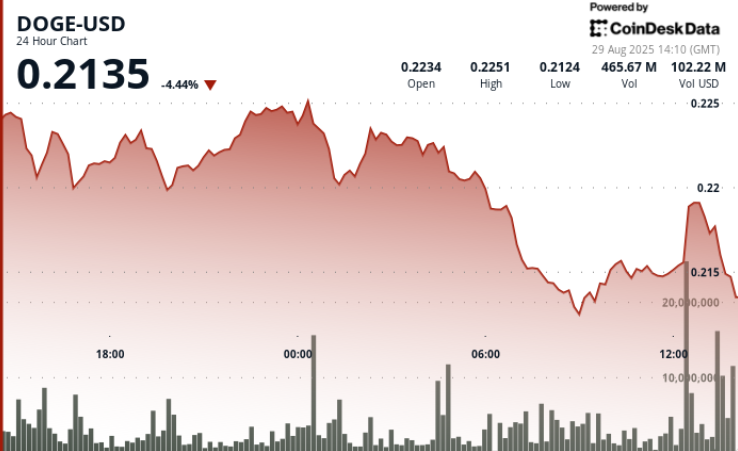Dogecoin slipped more than 2% to $0.21 in the last 24 hours, bucking the coin’s usual pattern of rallying on Elon Musk-related news.
The drop comes as rumors swirl that Musk’s attorney, Alex Spiro, is spearheading a Dogecoin (DOGE) treasury project aimed at raising $200 million from public investors.
According to Fortune, investors are receiving offers for a public vehicle that will invest in Dogecoin coins.
Summary
- Dogecoin slips 2% to $0.21 despite news of a $200m treasury initiative
- Elon Musk’s lawyer Alex Spiro is set to chair the planned DOGE treasury
- House of Doge backs the venture as Dogecoin’s official corporate vehicle
Dogecoin price slumps despite positive rumors
Since its 2013 debut, Dogecoin’s price has often moved in step with Musk’s public comments. However, the market’s muted response to the proposed treasury vehicle—a project reportedly approved by the official Dogecoin organization, the House of Doge—suggests that traders may be prioritizing fundamentals over hype.
Details about the structure and launch timeline remain scarce, even as analysts see potential for a renewed rally.
Spiro’s Track Record Defending Musk in Crypto Cases
Alex has successfully defended Musk against allegations of market manipulation.
In August 2024, Spiro helped secure the dismissal of a 2022 lawsuit claiming Musk had manipulated Dogecoin markets through social media posts.
Spiro, who also represents celebrities such as Jay-Z and Alec Baldwin, successfully argued that Musk’s comments constituted protected speech rather than market manipulation.
Musk’s influence over Dogecoin pricing has been so pronounced that his social media activity has become a key factor in trading strategies.
His 2021 Saturday Night Live appearance, where he called Dogecoin “a hustle,” caused immediate price volatility.
Nevertheless, analyst Ali recently posted on X that “Dogecoin $DOGE is ready for a 30% move.” This suggests that technical momentum may be building despite current price weakness.
This prediction aligns with historical patterns where DOGE often experiences sharp moves following periods of consolidation.
The treasury company’s plans could provide sustained buying pressure for Dogecoin if successfully launched.
At last check Saturday, Dogecoin is down nearly 9% over the previous seven days.
Source: CoinGecko










